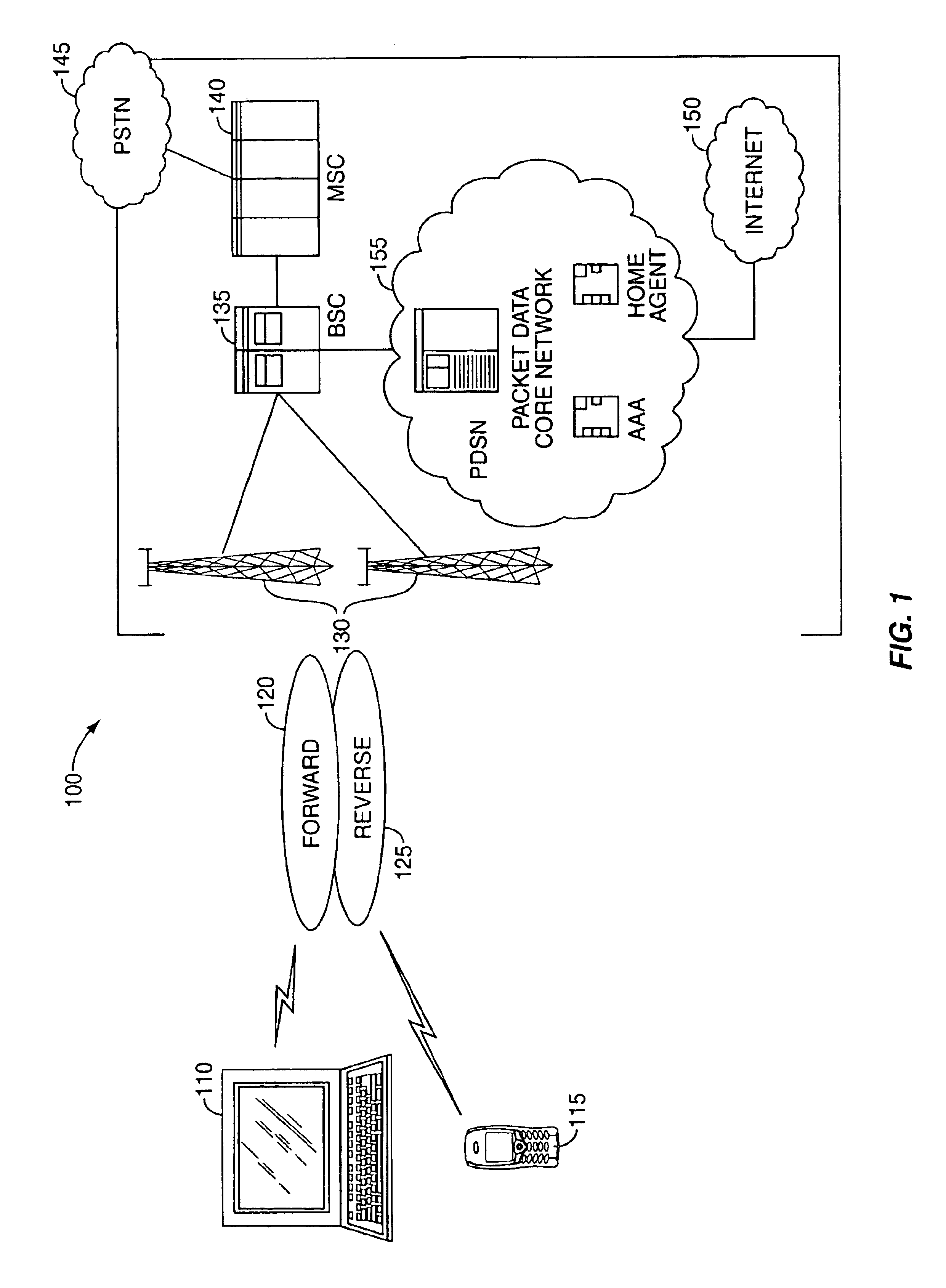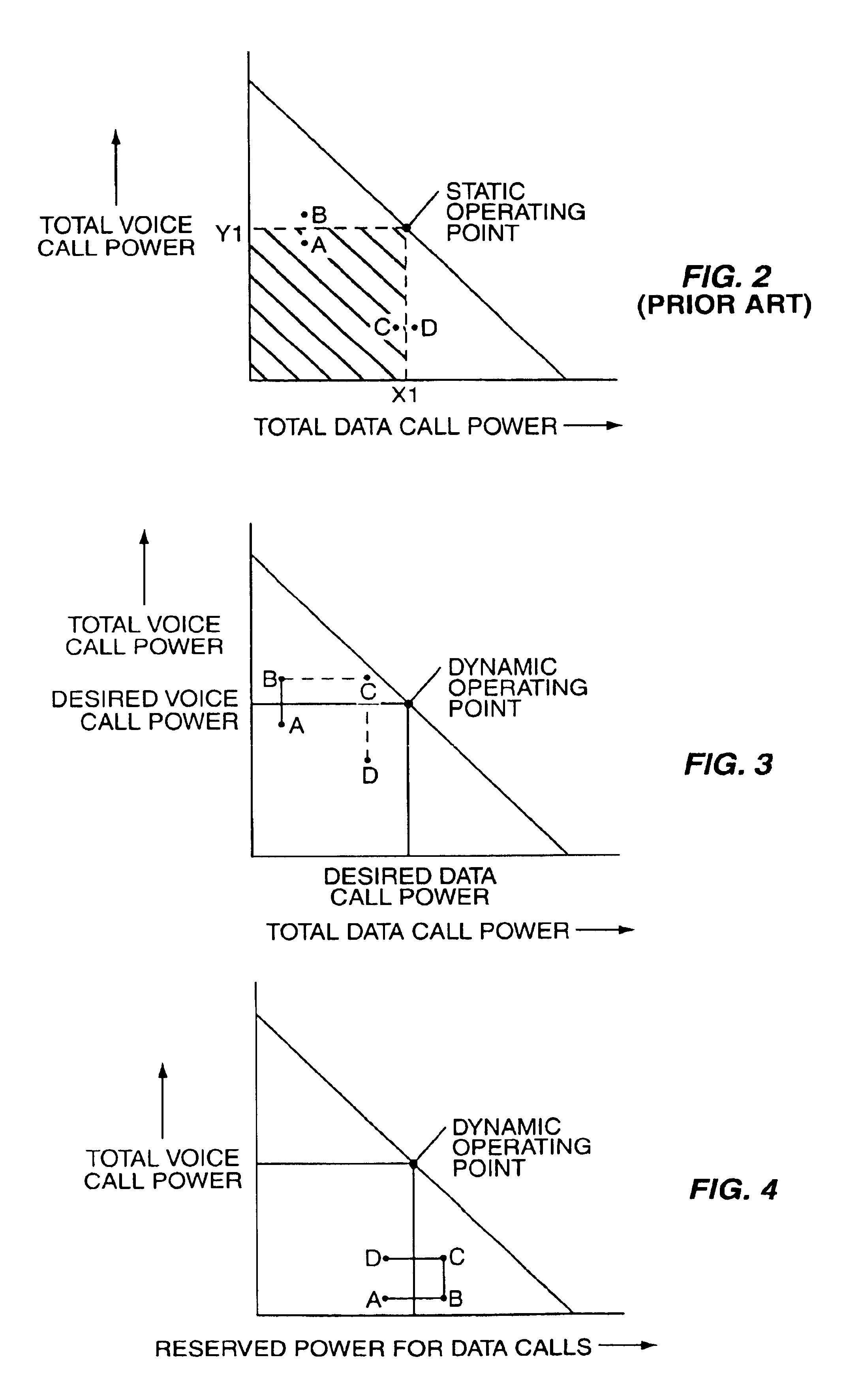Dynamic call admission
a call admission and dynamic technology, applied in the field of dynamic call admission, can solve the problems of limiting the number of users in the cdma system, unavoidable inefficiencies, and eventually unacceptable bit error rates
- Summary
- Abstract
- Description
- Claims
- Application Information
AI Technical Summary
Benefits of technology
Problems solved by technology
Method used
Image
Examples
Embodiment Construction
[0017]Turning now to the figures, a typical network architecture 100 for a cdma 2000 wireless system is illustrated in FIG. 1. Users at a mobile station such as a laptop computer 110 having a wireless transceiver or a handset 115 may transmit over a reverse radio channel 125 to radio base stations (RBS) 130. Similarly, the radio base stations 130 transmit over a forward radio channel 120 to the users 110 and 115. The forward and reverse radio channels 120 and 125 may carry voice, packet data, or other multi-services. The radio base stations 130 are under the control of a base station controller 135. A mobile switching center 140 connects a public switched telephone network (PSTN) 145 to the base station controller 135 so that voice calls may be placed between users 110 and 115 and users within the PSTN 145. In contrast to voice calls, data flowing to and from the Internet 150 such as packet data may directly enter the base station controller 135 via a packet data core network 155.
[0...
PUM
 Login to View More
Login to View More Abstract
Description
Claims
Application Information
 Login to View More
Login to View More - R&D
- Intellectual Property
- Life Sciences
- Materials
- Tech Scout
- Unparalleled Data Quality
- Higher Quality Content
- 60% Fewer Hallucinations
Browse by: Latest US Patents, China's latest patents, Technical Efficacy Thesaurus, Application Domain, Technology Topic, Popular Technical Reports.
© 2025 PatSnap. All rights reserved.Legal|Privacy policy|Modern Slavery Act Transparency Statement|Sitemap|About US| Contact US: help@patsnap.com



